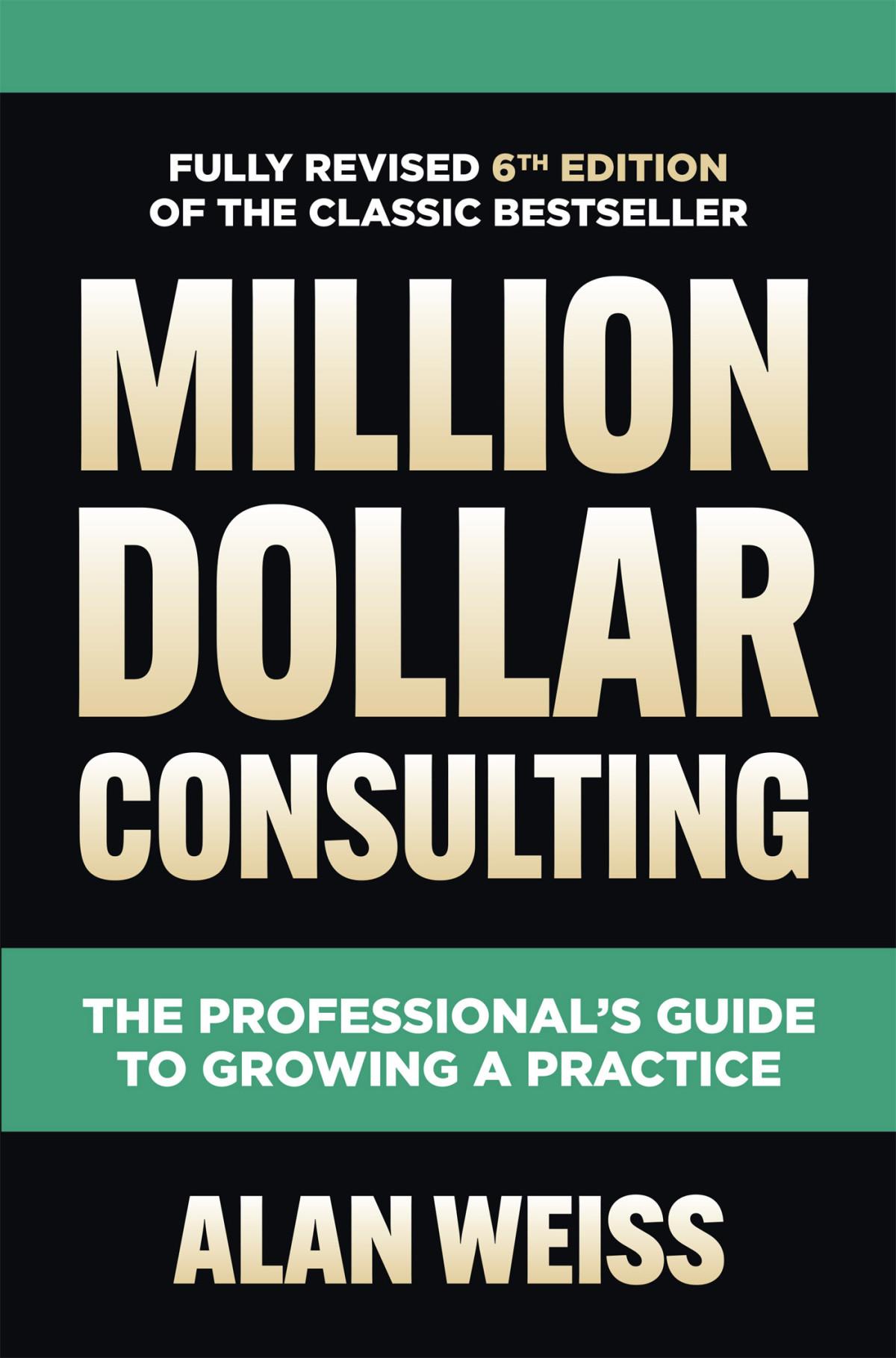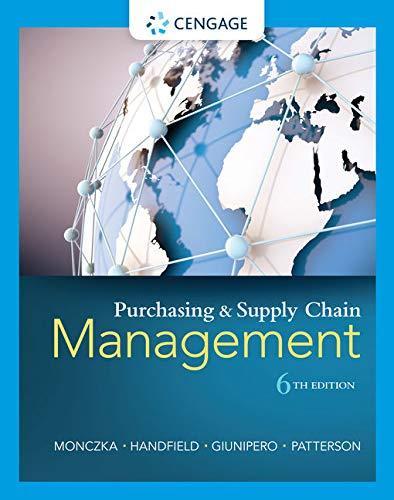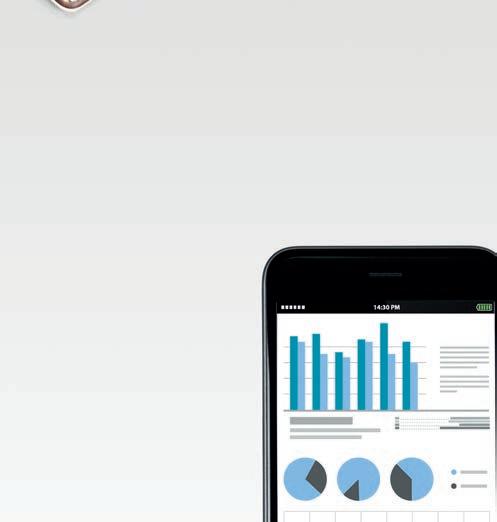The Second Chance Boutique Louisa Leaman
https://ebookmass.com/product/the-second-chance-boutique-louisaleaman/
ebookmass.com
LOUISE WICKHAM JEREMY WILCOCK
BUSINESS AND MANAGEMENT CONSULTING
Business and Management Consulting
At Pearson, we have a simple mission: to help people make more of their lives through learning.
We combine innovative learning technology with trusted content and educational expertise to provide engaging and effective learning experiences that serve people wherever and whenever they are learning.
From classroom to boardroom, our curriculum materials, digital learning tools and testing programmes help to educate millions of people worldwide – more than any other private enterprise
Every day our work helps learning flourish, and wherever learning flourishes, so do people.
To learn more, please visit us at www.pearson.com/uk
Business and Management Consulting
Delivering an Effective Project
Louise Wickham
Jeremy Wilcock
PEARSON EDUCATION LIMITED
KAO Two
KAO Park
Harlow CM17 9SR
United Kingdom
Tel: +44 (0)1279 623623
Web: www.pearson.com/uk
First published 1999 (print)
Second edition 2004 (print)
Third edition 2008 (print)
Fourth edition 2012 (print and electronic)
Fifth edition published 2016 (print and electronic)
Sixth edition published 2020 (print and electronic)
© Pearson Education Limited 1999, 2004, 2008 (print)
© Pearson Education Limited 2012, 2016, 2020 (print and electronic)
The rights of Louise Wickham and Jeremy Wilcock to be identified as authors of this work have been asserted by them in accordance with the Copyright, Designs and Patents Act 1988.
The print publication is protected by copyright. Prior to any prohibited reproduction, storage in a retrieval system, distribution or transmission in any form or by any means, electronic, mechanical, recording or otherwise, permission should be obtained from the publisher or, where applicable, a licence permitting restricted copying in the United Kingdom should be obtained from the Copyright Licensing Agency Ltd, Barnard’s Inn, 86 Fetter Lane, London EC4A 1EN.
The ePublication is protected by copyright and must not be copied, reproduced, transferred, distributed, leased, licensed or publicly performed or used in any way except as specifically permitted in writing by the publishers, as allowed under the terms and conditions under which it was purchased, or as strictly permitted by applicable copyright law. Any unauthorised distribution or use of this text may be a direct infringement of the authors’ and the publisher’s rights and those responsible may be liable in law accordingly.
All trademarks used herein are the property of their respective owners. The use of any trademark in this text does not vest in the author or publisher any trademark ownership rights in such trademarks, nor does the use of such trademarks imply any affiliation with or endorsement of this book by such owners.
Pearson Education is not responsible for the content of third-party internet sites.
ISBN: 978-1-292-25949-9 (print)
978-1-292-25951-2 (PDF)
978-1-292-25953-6 (ePub)
British Library Cataloguing-in-Publication Data
A catalogue record for the print edition is available from the British Library
Library of Congress Cataloging-in-Publication Data
A catalog record for the print edition is available from the Library of Congress
10 9 8 7 6 5 4 3 2 1 24 23 22 21 20
Cover: Marko Kujavic/EyeEm/Getty Images; Sitthiphong Thadakun/EyeEm/Getty Images; OnstOn/iStock/Getty Images Plus
Print edition typeset in 9.5/12.5 Charter ITC Std pt by SPi Global Printed in Slovakia by Neografia
NOTE THAT ANY PAGE CROSS REFERENCES REFER TO THE PRINT EDITION
To Annabelle, Constance, Hazel, Henry and Mabel
Lecturer Resources
For password-protected online resources tailored to support the use of this textbook in teaching, please visit go.pearson.com/uk/he/resources ONTHE WEBSITE
Preface
Being a consultant shares many similarities with being a manager but there are important differences. Doing a student consulting project is a good way for the uninitiated to experience what it is like and more importantly practise the key skills required. This book aims to offer comprehensive support to students undertaking a consulting exercise as part of their course. It will be of value to undergraduates and higher degree students, offering a range of insights, tools and practical advice appropriate for both levels. Although the book is primarily aimed at those studying management, we recognise that students studying many other disciplines undertake consulting projects, such as those on engineering, IT or creative courses, so it is relevant for them as well.
The first edition of Management Consulting was published 20 years ago and since then, this book has occupied an almost unique niche in providing students with the tools to undertake a consulting project, while at the same time providing a framework for new professional practitioners to use. For the sixth edition, we have added some new material to reflect the way in which the world of management consulting is evolving in the rapidly maturing digital age. The businesses the consultant works for are changing, but many of the same challenges remain. As more businesses use external consultants, they have become more demanding as clients expect more concrete evidence of success. Gone indeed are the days when the seasoned operator could just say ‘Trust me, I’m a consultant’. Our favourite cartoon depicted in Figure 4.2 is perhaps becoming a thing of the past but it serves as a useful reminder that successful consulting is about both the client and the consultant working together as equal partners.
Both authors have many years’ experience in the world of business and consulting in particular and this provides a counterbalance to the more academic literature on management consulting in other texts. In addition Jeremy Wilcock is Lecturer in International Marketing at the University of Hull, where he has also spent many years strengthening the Business School’s relationships with its Corporate Partners and the business community in general. He has lectured in strategic management at undergraduate and MBA level at Hull, supervised and assessed student teams working on Management Consulting projects and has acted as academic supervisor for successful Knowledge Transfer Partnerships.
This book can be used both as a reference point to check on tools and techniques and used sequentially to manage a consulting project. Part One (Chapters 1–3) is concerned with consulting in its managerial and business context. Part Two, on project proposal and start-up (Chapters 4–6), considers the factors that a student should look at to successfully win and start a project, including vital analysis skills. Part Three, on undertaking the project (Chapters 7–10), considers the key project management and relationship-building skills required for successful delivery. The final part of the book (Chapters 11–12), on delivering the product to the client, considers communicating the outcome of the project and
learning from it. It also looks at consulting as a profession and provides a guide to major consulting firms and the career structures they offer to those who are considering consulting as a future career.
Another way to use the book is to divide the sections into the consulting experience and the consulting process. Figure P.1 shows the two areas. The experience is about what is consulting, what it can do for a business and the skills required. The process is the mechanics by which the reader can achieve a successful project.
The consulting experience
Consulting & management
Consulting & Business
Consulting skills Consulting tools
Using the consulting experience
Chapter 1 (1.3–1.4)
Chapter 3
Chapter 8 (8.3)
Chapter 1 (1.1, 1.4–1.9)
Chapter 2 (2.1–2.3)
Chapter 4 (4.1)
Chapter 7
Chapter 11 (11.1–11.4, 11.7)
Chapter 6
Chapter 9
Chapter 12 (12.4–12.10)
The consulting process
Overview
Proposal
Preliminary review
Managing the project Report
Follow-up
Chapter 2 (2.4–2.8)
Chapter 4 (4.3–4.5)
Chapter 5
Chapter 8
Chapter 10
Chapter 11 (11.5–11.7)
Chapter 12 (12.1–12.3)
Figure P.1 Sections of the book by area
We also recognise that this book is being used by a wide variety of students, ranging from undergraduates who are doing their first consulting project to experienced managers who have had some experience of consulting but wish to know more. While it would be impossible to identify which parts of the book are relevant for each individual student, we have instead created some pathways (see Table P.1) for four typical users to help readers navigate and get the most out of the book:
● Third year undergraduate (principally business) students doing first project (A)
● Masters or PhD students without business experience (B)
● MBA and other Masters students with business experience (C)
● Business managers working with consultants or starting out in consulting themselves (D)
Table P.1 Sections of book relevant for each student type to follow
This is a large subject and students should look at the suggestions for key and further reading to explore the ideas further. At the end of each chapter again there is a short case exercise. Many of these are new and based on real cases (though again names have been changed to protect the guilty!). In addition, there is a longer case study that runs throughout the book on a strategic consulting exercise undertaken at the Apollo Tech Solutions company. The latter is designed for the student to use the knowledge learned in the preceding chapters. All of these changes are in a large part in response to the reviewers of the fifth edition, who gave us many valuable comments and feedback as to how we could improve the text. We would like to thank them for their contributions as well as Margaret Dewhurst, Tony Kellett, David Bishop and the team at Pearson, for all their help and support, without whom this would not be possible.
We hope that this book will both aid your consulting project and make it more interesting and rewarding, whether as a student exercise or in real life.
Louise Wickham
Jeremy Wilcock August 2019
Publisher’s acknowledgements
Text Credit(s):
3 Management Consultancies Association: The value of consulting an analysis of the tangible benefits of using management consultancy, March 2010. Retrieved from https://www.gzs. si/pripone/MCA%20analysis%20%20TheValueofConsulting_0.pdf; 4 Hachette UK: O’Shea, J. and Madigan, C. (1999). Dangerous company (2nd edn). Boston MA: Nicholas Brealey Publishing; 6 University of Rome Tor Vergata: FEACO Survey of the European Management Consultancy 2017–18 (December 2018). University of Rome Tor Vergata; 8 Gartner, Inc.: Gartner_Inc. (2019). Market Share Analysis: Consulting Services, Worldwide, 2018. Retrieved from https://www.gartner.com/en/documents/3907120/marketshare-analysis-consulting-services-worldwide-2018; 9 Pearson Education: Mintzberg, H. (2011). Managing . Harlow, Essex: Financial Times Prentice Hall; 15 Moya K. Mason: Mason, Moya K. (2011). What causes small businesses to fail. Retrieved from www.moyak.com/papers/small-business-failure.html [accessed 24 November 2015]; 17 Telegraph Media Group Limited: Daily Telegraph, 3 March 2012; 17 Growthink Inc: Lavinsky, D. (2008). The 6 untold reasons why businesses fail. Retrieved from www.growthink.com/content/6-untold-reasons-why-businesses-fail [accessed 24 November 2015]; 17 Tony Hsieh: Toni: What culture means to me. (2015). Retrieved from https://www.zapposinsights.com/blog/item/toni-what-culture-means-to-me; 18 Agricultural Development Center: Holland, R. (1998). Planning against a business failure, ADC Info. No. 24 Paper, University of Tennessee. Retrieved from https://frrl.files.wordpress. com/2009/09/smallbusiness_planningagainstabusinessfailure_uoftennessee.pdf; 25 Go Global: Go Global brochures, Dirk Schuyster; 29 IOS Press: Furlan, A. and Grandinetti, R. (2011). Size, relationships and capabilities: A new approach to the growth of the firm. Human Systems Management, Vol. 30, 195–213; 35 The Institute of Risk Management: The Institute of Risk Management. A Risk Management Standard © AIRMIC, ALARM, IRM 2002. Reproduced with permission; 50 Sherlock, J: Sherlock, J. (2006). Be prepared – it’s a jungle out there, Exporting World, Sept/Oct, pp. 30–31; 53, 64 Pearson Education: Kotler, P. (2015). Marketing management (15th edn). Harlow, Essex: Pearson Education; 55 Springer Nature: Johanson, J. and Vahlne, J.E. (1977). The internationalization process of the firm: a model of knowledge development and increasing foreign market commitment. Journal of International Business Studies , Vol. 8, No. 1. 23–32; 62 Pearson Education: Hollensen, S. (2016). Global marketing (7th edn). Harlow: Pearson; 63 Pearson Education: Brassington, F. and Pettitt, S. (2006). Principles of marketing . Harlow, Essex: FT Prentice Hall; 63 Harvard Business Publishing: Levitt, T. (1983). The globalization of markets. Harvard Business Review, May–June, 92–102; 65 Pearson Education: Kotler, P. (2000). Marketing management (10th edn). Prentice Hall of India; 65 Pearson Education: Kotler, Philip. (2003). Marketing management (11th edn). Prentice Hall, p. 395. Reprinted and electronically produced by permission of Pearson Education, Inc., Upper Saddle River, New Jersey; 65 Penguin Random House: Schlosser, E. (2002). Fast food nation. London: Penguin Books; 79 Kogan Page Limited: Czerniawska, F. and May, P. (2006). Management
Publisher’s acknowledgements
consulting in practice. London: Kogan Page (Chapters 1 and 2); 82 Kogan Page Limited: Heiman, S.E., Miller, R. and Tuleja, T. (2011). The new strategic selling (revised 3rd edn). London: Kogan Page; 82 Pearson Education: Fombrun, C.J. and Nevins, M.D. (2004). The advice business: Essential tools and models for management consulting. Upper Saddle River, NJ: Pearson Prentice Hall (Chapters 2 and 9); 84 Taylor & Francis: Rackham, N. (1995). Spin-Selling®. Aldershot, Hampshire: Gower; 100 iSixSigma: The Cause and Effect (a.k.a. Fishbone) Diagram. (June 22, 2017). Reprinted with permission from iSixsigma; 114 Elsevier: Harmon, P. (2007). Business process change: A guide for business managers and bpm and six sigma professionals (2nd edn). p. 171; 115 Pearson Education: From Exploring Public Sector Strategy, Pearson Education, Ltd. (Johnson, G. and Scholes, K. 2001) p. 301, © Pearson Education, Ltd. Reproduced with permission; 131 Simon & Schuster Inc: Adapted with the permission of The Free Press, a Division of Simon & Schuster Adult Publishing Group, from Competitive Strategy: Techniques for Analyzing Industries and Competitors by Michael E. Porter, 1980, 1998, The Free Press; 132 Springer Nature: Hax, A.C. and Wilde, D.L., The Delta Project: Discovering New Sources of Profitability in a Networked Economy, 2001, Palgrave Macmillan. Figure 1.1, page 10. Republished with permission of Palgrave Macmillan; 133 Harvard Business Publishing: Weill, P. and Woerner, S. L. (2018). What’s your digital business model? Boston, Mass: Harvard Business Review Press; 134 MIT Sloan: P. Weill and S. L. Woerner. (June 16, 2015). Thriving in an increasingly digital ecosystem. MIT Sloan Management Review , Vol. 56, no. 4. 27–34. © 2017 MIT Sloan Center for Information Systems Research. Used with permission; 135 Harvard Business Publishing: Reprinted by permission of Harvard Business Review. Adapted from Figure 1.1: Translating Vision and Strategy – Four Perspectives from Using the balanced scorecard as a strategic management system by Kaplan, R.S. and Norton, D.P. (Jan–Feb 1996). Copyright © 1996 by the Harvard Business School Publishing Corporation. All rights reserved; 136 Harvard Business Publishing: Adapted from Exhibit 1: The Ansoff Matrix from ‘Strategies of diversification’ by Ansoff, H.I. Issue No. 25(5), Sept/Oct 1957. Copyright © 1957 by the Harvard Business School Publishing Corporation. All rights reserved; 137 Margaret Dewhurst and Tony Kellett: Margaret Dewhurst and Tony Kellett. Used with permission; 160–161 Meredith Belbin: Meredith Belbin published Management Teams back in the 1980s; 153 Cengage Learning: After Champion, D.P., Kiel, D.H. and McLendon, J.A. (1990). Choosing a consulting role. Training and Development Journal, 1 February; 167–168 Harvard Business Publishing: Field, A. (2009). Diagnosing and fixing dysfunctional teams, Harvard Business Publishing Newsletters, 12 March; 168 Dr Edward de Bono’s: Bono, E. de (2016). Six thinking hats . London: Penguin Life; 176–177 Taylor & Francis: Pemer, F. and Werr, A. (2013). The uncertain management consulting services client. International Studies of Management & Organization , Vol. 43, No. 3. 33–35. (c) Taylor and Francis; 178 Pearson Education: Adapted from The Seven Cs of Consulting, Chapter 4, 3rd edn, Pearson Education, Ltd (Cope, M. 2010) © Pearson Education, Ltd. Used by permission; 179 Pearson Education: Mintzberg, H. (2011). Managing. Harlow, Essex: FT Prentice Hall; 183 Penguin Books: Handy, C. (1993). Understanding organisations (4th edn). London: Penguin; 183 Pearson Education: Mintzberg, H. (2011). Managing. Harlow, Essex: FT Prentice Hall; 184 Elsevier: Reprinted from P.J. Idenberg, Four styles of strategic planning. Long Range Planning, Vol. 26, No. 6. 132–7. Copyright © 1993, with permission from Elsevier; 185 Deloitte: Used with permission from Deloitte; 186 Harvard Business Publishing: Kotter, J.P. (2012). Leading change Boston, MA: Harvard Business School Press; 186 Pearson Education: Balogun, J.,
xix
Publisher’s acknowledgements
Hope Hailey, V. and Gustafsson, S. (2016). Exploring strategic change (4th edn). Harlow, Essex: FT Prentice Hall; 188 Harvard Business Publishing: Michael D. Watkins, Clayton M. Christensen, Kenneth L. Kraemer, Michael E. Porter (2015). Harvard Business Review Leadership Library: The Executive Collection (12 Books), Harvard Business Review Press; 191 Pearson Education: Cope, M. (2010). The seven Cs of consulting: The definitive guide to the consulting process (3rd ed). Harlow, Essex: FT Prentice Hall; 191 John Wiley & Sons, Inc.,: Kotter, J.P. (2014). Capturing the opportunities and avoiding the threats of rapid change. Leader to Leader, Fall, 32–7; 192 Emerald Publishing Limited: Armenakis, A.A. and Harris, S.G. (2002). Crafting a change message to create transformational readiness. Journal of Organizational Change Management, Vol. 15, 169–183; 193 John Wiley & Sons, Inc.,: Block, P. (2011). Flawless consulting (3rd edn). San Francisco, CA: Jossey Bass; 194 SAGE Publishing: Campbell, K.S., Carmichael, P. and Naidoo, J.S. (2015). ‘Responding to hostility: Evidence-Based guidance for communication during planned organizational change’. Business and Professional Communication Quarterly, Vol. 78, No. 2. 197–214.; 221 BPP Professional Education Limited: ACCA – P3 Business Analysis. (2010) London: BPP Learning Media; 223–224 Keyhole: Keyhole. (2019). Top 25 Social Media Analytics Tools for Marketers. October 23. Retrieved from https://keyhole.co/blog/list-of-the-top25-social-media-analytics-tools/; 243 Allen Institute for AI: Lipshitz, R. and Strauss, O. (1997). Coping with uncertainty: A naturalistic decision-making analysis. Organizational Behavior and Human Decision Processes , Vol. 69, 149–163; 260 Pearson Education: Minto, B. (2008). The pyramid principle (3rd edn). Harlow, Essex: FT Prentice Hall; 265 Harvard Business Publishing: Duarte, N. (2012). Structure your presentation like a story. Harvard Business Review, 31 October; 274 Kogan Page Limited: After Miller and Heiman, in Heiman, S.E., et al. (2011). The new strategic selling . London: Kogan Page; 283 John Wiley & Sons, Inc.,: Biswas, S. and Twitchell, D. (2002). Management consulting: A complete guide to the industry. New York: John Wiley and Sons (Chapters 5, 7 and Appendices); 285–286 David Keirsey: Keirsey, D., & Keirsey, D. (1998). Please understand me Ii: temperament, character, intelligence. Del Mar, CA: Prometheus Nemesis.
Cartoon: 90 Knight Features: Copyright © Scott Adams, Inc./Dist by UFS, Inc. Reproduced by permission.
Screenshot: 233 Gantt: Gantt chart, gantt.com.
PART ONE






























